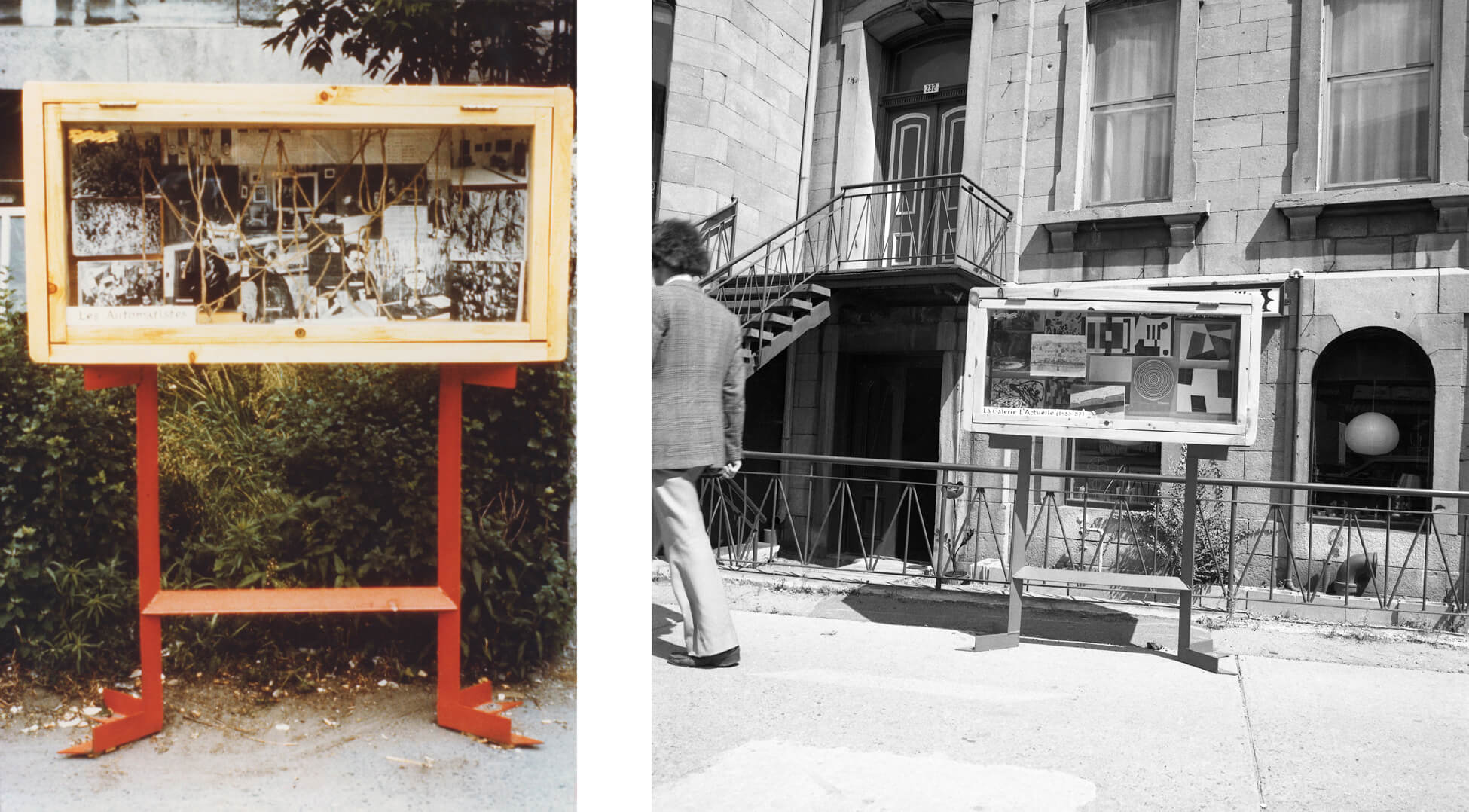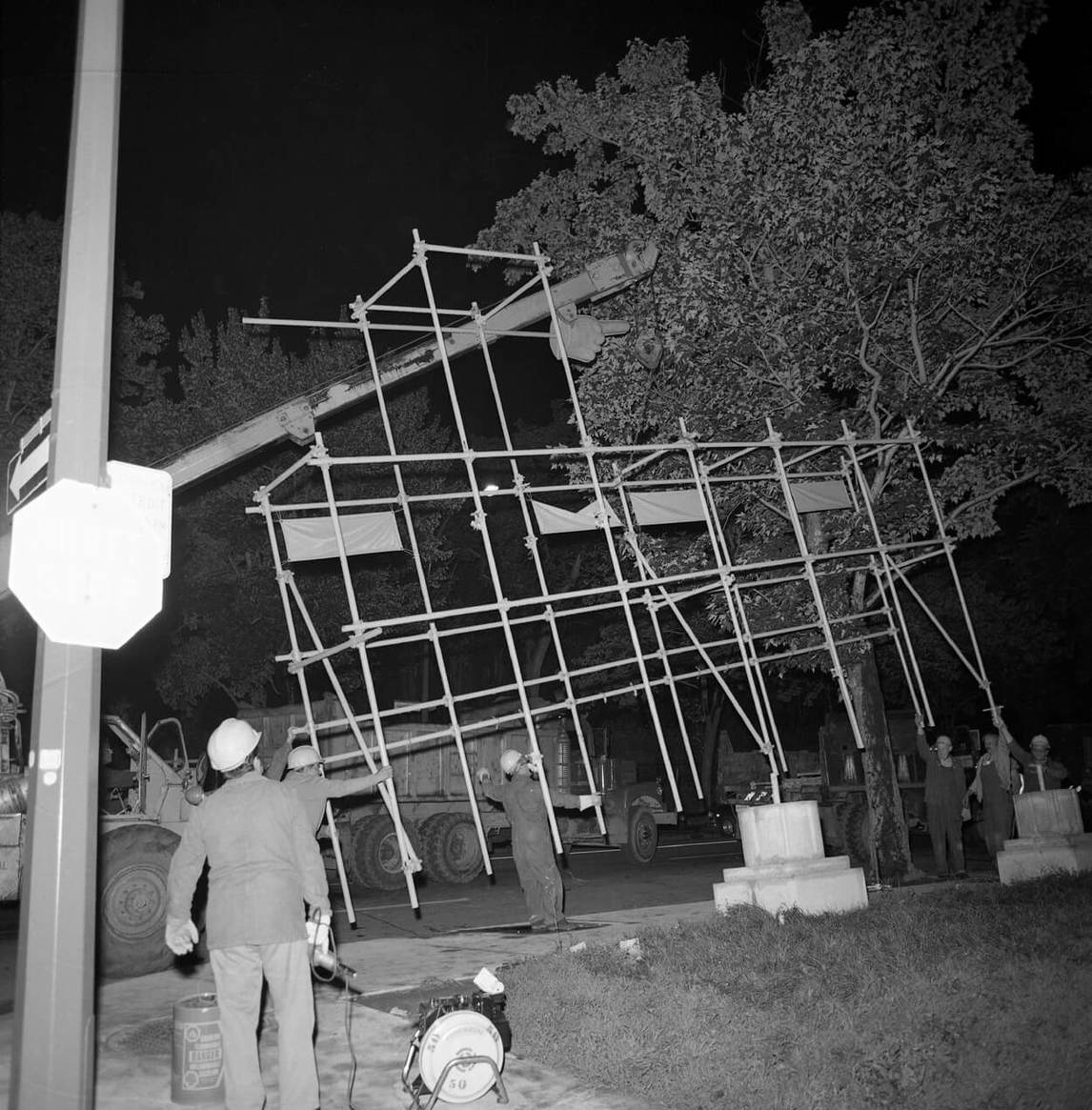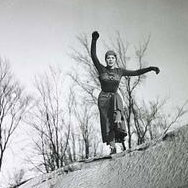Legend of Artists 1976

Françoise Sullivan, with the assistance of David Moore and Jean-Serge Champagne, Legend of Artists (La légende des artistes), 1976
Showcase dedicated to the Automatistes: metal, wood, glass, and documents
LEFT: “Les Automatistes,” photograph by Louis-Philippe Meunier, Concordia University Archives, Montreal
RIGHT: “La galerie L’Actuelle,” photograph by Louis-Philippe Meunier, Archives de la ville de Montréal
Corridart was a six-kilometre-long public exhibition displayed along Sherbrooke Street in Montreal between Atwater Street and the Olympic Complex, and timed to coincide with the 1976 Olympic Games. Artist and architect Melvin Charney (1935–2012) organized the event, which brought together some sixty artists, including Pierre Ayot (1943–1993), Claude Thibaudeau (b. 1932), Bill Vazan (b. 1933), and Françoise Sullivan. With the assistance of David Moore (b. 1943) and Jean-Serge Champagne (b. 1947), who worked according to her directions, Sullivan conceptualized twelve panels and six small exhibition cases, which she placed on the sidewalks in front of the homes where important intellectuals and artists, such as Émile Nelligan (1879–1941), Norman Bethune (1890–1939), Paul-Émile Borduas (1905–1960), Pierre Gauvreau (1922–2011), and Claude Gauvreau (1925–1971) had lived, or where important cultural events had occurred, such as L’Actuelle, a gallery founded by Guido Molinari (1933–2004) and Fernande Saint-Martin (b. 1927).


The laminated wood cases were about half a metre high and set on red-painted steel legs. Resembling tiny museums, they displayed pictures, texts, and various objects meant to provide insight into Montreal’s particular history and cultural sensibility. Said Sullivan, “I wanted this work to be a display of the artist’s practice but also a tribute to ideas that survive over time … I approached it in a way that I felt would be humane, profound, almost Proustian.”
Legend of Artists was the fourth walk in Sullivan’s oeuvre. To it she brought a fresh approach that allowed her to innovate, once again, with performance. Rather than documenting her experience as an artist, Legend of Artists was an invitation to the public to discover the cultural life that had characterized Montreal’s development over time as they strolled along one of its main arteries. Few people, however, got to experience the work. The vision of Montreal’s culture and history that Sullivan and the other artists put forth focused on modernity and diversity, but the exhibition also deliberately exposed Montreal’s social and economic problems at that time, and this outraged Montreal mayor Jean Drapeau. Inaugurated on July 7, 1976, Corridart was dismantled on July 13, four days before the Olympic Games’ opening ceremony. Infuriated by the decision and the destruction of their works, twelve artists—including Sullivan—launched a lawsuit against the City of Montreal. It took twelve years for the plaintiffs to reach a settlement of a few thousand dollars each. For Sullivan, “Corridart will always be an affront. I had approached the project as a serious one. I worked with all my heart, as if I was reconstructing a chronicle from across time.”

 About the Author
About the Author
 More Online Art Books
More Online Art Books
 Acknowledgements
Acknowledgements